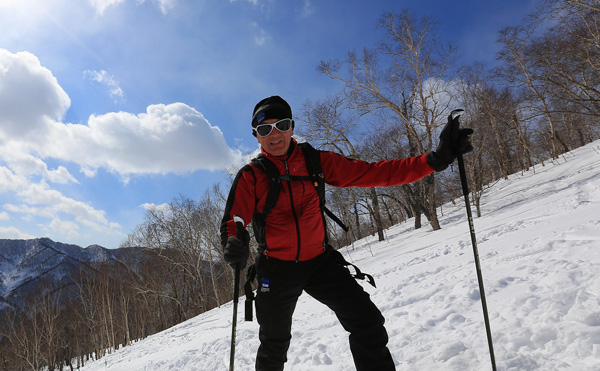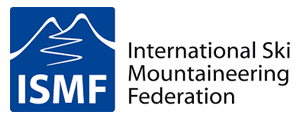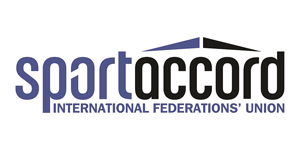With many things going in the right direction for the sport of ski mountaineering racing, we reached out to Armando Mariotta – the president of the International Ski Mountaineering Federation (ISMF) – for an interview with 10 questions we were curious about.
We divided them into two sections – Future of our sport and its place within Olympics, and ISMF’s anti-doping efforts.

Future of Ski Mountaineering Racing & Olympics
Q: By IOC recognizing the ISMF this summer, skimo racing is one step closer to be an Olympic sport. What are the things that still need to happen for skimo to truly be in Olympics one day?
 Just to be clear: the IOC recognition has been for the ISMF and not for skimo as a new Olympic Sport. With the full recognition we can now ask the IOC to accept our sport into next Olympic Games.
Just to be clear: the IOC recognition has been for the ISMF and not for skimo as a new Olympic Sport. With the full recognition we can now ask the IOC to accept our sport into next Olympic Games.
Q: Do you think skimo racing as a sport will be included in Beijing 2022 Winter Olympics? Also, would it be officially called “skimo racing” or “ski mountaineering racing”?
Our first effort is to enter the program of Youth Olympic Games in Lausanne 2020 and then we could ask to enter Beijing.
The name of the sport is clearly ski mountaineering.
Q: Which skimo disciplines are the most likely to make it into Olympics?
The first step will be to have an acceptance by the IOC for a new sport into the Winter Olympic Games and then we’ll discuss which discipline(s). As you know for example sport climbing had all the three disciplines but only one medal.
Q: ISMF recently renewed its media contract with Infront Sports & Media – a big sports media company that represents all seven Olympic winter sport federations, manages media rights for the FIS World Cup Events, and even represents big football/soccer teams. What does this mean for skimo?
The contract will give to the ISMF and to our sport many new possibilities to grow in the international TV visibility, a space to the organizers for their sponsors in the TV area range, some money to the ISMF and the possibility to have a Press Agent (Lucia Galli) for the institutional and sport press releases.
Q: What is the ISMF’s plan to encourage more youth participation in our sport? And what are your thoughts on growing our sport as a whole?
With the limited resources we have we are working for youth. For example, thanks to the collaboration of DAV and OSV from 8 to 11 December we are going to organize a youth camp in Austria for aspirant young athletes. In view of the work for the YOG we have new ideas and projects.
Q: Is it true that most of the ISMF personnel (staff, referees, committee members, etc.) are volunteers and receive no money?
You are right. All the members of the Executive Board, Management Committee, Commissions are volunteers as well as the Referee Manager and the Referees.
The only people paid are the Secretary (Giulia Avagnina), the director of the Sport Department (Rebecca Vernon) and the technical director (Gil Orriols).
You can completely read our 2015 accounts revised by the auditor on our Website www.ismf-ski.org – official documents section.
Anti-doping Efforts and Latest Doping Cases
ISMF has accepted WADA anti-doping code couple of years ago, thus, I would like to ask a couple of questions regarding anti-doping efforts in our sport.
Q: During World Cups and World Championships, does ISMF test athletes directly or does it coordinate the testing with a national anti-doping body in that country?
 The ISMF some years ago decided to sign an agreement with SportAccord as service provider for the anti-doping tests, so they organize directly all the controls.
The ISMF some years ago decided to sign an agreement with SportAccord as service provider for the anti-doping tests, so they organize directly all the controls.
Q: How many in competition and out-of-competition anti-doping tests does ISMF (on its own or through its partners) performs every year?
In the average the ISMF through its provider SportAccord does:
- 28 In-Competition tests (28 Urine tests)
- 81 Out-of-Competitions tests (36 Urine tests + 3 Blood tests + 42 Blood tests included the Athlete Biological Passport)
- 17 Out-of-Competition blood tests covered by National Anti-Doping Organizations (NADO) as part of Athlete Biological Passport (ABP) sharing agreement
Moreover, the ISMF includes at least 10 top-level athletes in the Registered Pool Testing (RTP) every year.
Q: Were there any positive doping tests in skimo in the last 5 years? Where does ISMF publish this information?
There have been two Adverse Analytical Findings in skimo in 2015, if we consider the past 5-year-period: one RTP athlete in World Championships in Verbier, and one popular athlete in a La Grande Course race (long distance teams race).
Information about the first case was officially given with the press-release on 3rd December, 2015 which can be found at www.ismf-ski.org – News section.
Concerning the second case, another official communication will be published always in the news section of the ISMF website in the near future.
Q: How many Therapeutic Use Exemption (TUE) applications does ISMF receive every year? What percentage does usually get approved?
The 2016-2017 season will be the first one with the management of the TUE for the ISMF. In the past, it was a management of national federations, so we don’t have this type of information.
Our Thoughts
From one of the answers it is very obvious that our sport is still small despite so many great races and its history. It seems like the only way to grow is through becoming an Olympic sport because TV rights are where the money is – we wrote about this in regards to skimo two years ago.
With potentially more money coming into the sport in the future there will likely be a rise in the number of doping cases. This is just a fact and not only in sports but sadly in society in general. However, we believe that skimo will continue to be one of the best sports to put your children in.
What are your thoughts? Or questions you would ask? Please share them in the comments section below. Thank you.


Leave a Reply